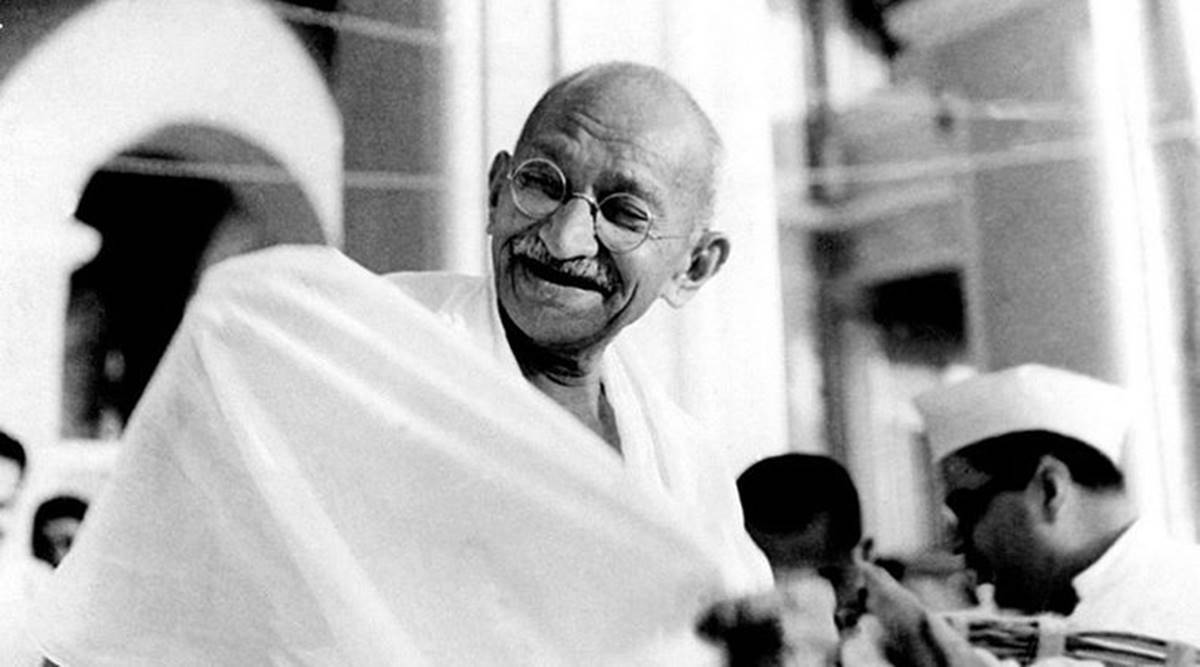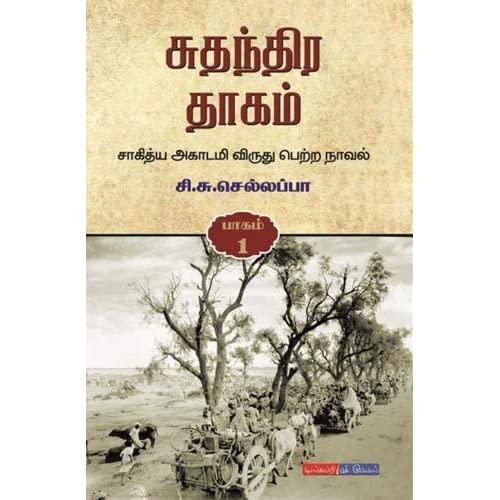
A little-known Tamil epic based on the freedom struggle & Gandhism
Running into 1,600 pages and being published in three parts, 'Suthanthira Thaagam' delves into the historic events that had played out in India between the volatile years of 1927 and 1934, which is when the freedom struggle was at its height.

All eyes are on the release of Vetrimaaran’s ‘Vaadivaasal’. This is the new Tamil film under production starring Tamil actor Surya. Vetrimaaran, who is known for adapting literary works into films, has decided to bring the classic of the same name to life on celluloid.
Written by C S Chellappa, one of the popular litterateurs of the 1960s and 1970s, the slim novel is based on Jallikkattu or bull vaulting and has been translated into English as ‘Arena’ by N Kalyanaraman and published by the Oxford University Press.
Satyagrahi turned story-teller
Chellappa, who also ran the literary magazine ‘Ezhuthu’, has serialised this novel in the magazine. There has been a lot of interest about Chellappa after the film ‘Vaadivaasal’ has been announced. Chellappa has written more than one novel in his lifetime. His second novel titled ‘Suthanthira Thaagam’ however did not receive as much attention as his first novel.
This was unfortunate the novel first published n 1997 by the author himself went on to win the Sahitya Akademi award in 2001. It was released when the country celebrated its Golden Jubilee year of Independence. The novel celebrates its 25th anniversary this year.
 Running into 1,600 pages and being published in three parts, ‘Suthanthira Thaagam’ delves into the historic events that had played out in India between the volatile years of 1927 and 1934, which is when the freedom struggle was at its height. He also effectively captures the life of Mahatma Gandhi and how his ideas and philosophy attracted many Indians at that time.
Running into 1,600 pages and being published in three parts, ‘Suthanthira Thaagam’ delves into the historic events that had played out in India between the volatile years of 1927 and 1934, which is when the freedom struggle was at its height. He also effectively captures the life of Mahatma Gandhi and how his ideas and philosophy attracted many Indians at that time.
Also read: New book tells story of 3 eminent Tamils who shaped Bengaluru city
Born in Vathalagundu in Dindigul district, Chinnamannur Subramaniam Chellappa had imbibed the spirit of patriotism from his father Subramania Iyer who had worked under the British. At his young age, he could sing 400 songs related to nationalism from memory, because of which he was often found in the Congress rallies. When he was studying at Madura College in Madurai, he actively participated in boycotting the Simon Commission. Having participated in a satyagraha, Chellappa spent six months in prison in 1941.
His first-hand experience of the freedom struggle gave him the confidence to write this novel, which he referred to as an “epic”. However, many publishers hesitated to publish the book since it ran into more than thousand pages. However, by 1997, Chellappa published the book on his own and gradually it was forgotten in the passage of time. In 1998, he died.
Capturing Gandhism at its peak
‘Suthanthira Thaagam’ is a tale of three college students, their professor and principal along with their spouses and their friends being drawn to the Gandhian philosophy and their contribution to the freedom struggle.
The novel has more than fifteen characters. It begins with the boycott of the Simon Commission in 1927-1928 and goes on to document the Salt Satyagraha in Vedaranyam under C Rajagopalachari’s leadership in 1930. The book then moves on to the Civil Disobedience Movement, the Round Table Conference between 1930 and 1932, and finally concludes with Gandhi’s Harijan Padyatra in 1934.
Chellappa wrote in the preface to his novel that the period between 1919 and 1923 were the years of the non-cooperation movement, while the period between 1940 and 1944 centred around the Quit India movement.
“I have chosen to write about the years in between ie., 1927 and 1934. That was the Salt Satyagraha and Civil Disobedience movement years. I consider the years 1919-1923 as the infant years of Mahatma Gandhi and from 1940 to 1944 as the years past his prime. It was the middle years of 1927 to 1934 that were the years of the prime time of Gandhism. So, I have made these years as the period for my novel, because those were my college years and I had first-hand experience of the happenings of that time,” he added.
Also read: Journeying with Mahasweta Devi – a film that captured the writer’s essence
The diaries he maintained at that time, the ‘Young India’ magazines run by Gandhi, the speeches he listened to, the conversations he had with the leaders then, the books he read were useful for Chellappa when he started to pen the novel.
“So, the novel is authentic when it refers to historical incidents,” he added.
A city in the thick of the freedom struggle
All these developments were recorded in the novel by Chellappa with Madurai at the epicentre. This was because Madurai was considered as ‘Southern Bombay’ during the freedom struggle since it kept pace with every form of struggle that unfolded at the national level.
The novel blends fiction and true life incidents. Chellappa faithfully weaves in the sons of the soil such as barrister George Joseph, NMR Subbaraman, A Vaidyanatha Iyer, etc., into his novel.
The novel not only records the history of the freedom struggle but also documents the cultural changes of that time. The talkies had arrived; the young men were fond of Shakespearean collars, which Bhagat Singh wore; people smeared their forehead with holy ashes and were not shy to identify themselves as Hindus; the newspaper ‘The Hindu’ came to Thoothukkudi only in the evenings; and Tagore’s ‘Jana Gana Mana’ was sung at the beginning of functions.
Thoughts on Gandhi
In the book, it is interesting to note that Gandhi was viewed from different angles. He was seen as acting against the Hindus, particularly by the Brahmins since he treated both Dalits and Brahmins as equals; secondly, he was seen as being basically communal by people like Justice Party cadres. Thirdly, he was accepted as who he was as well.
The ‘passive resistance’, the term used by Gandhi during his years in South Africa and ‘the law of suffering’, are two philosophies frequently discussed by the novel’s characters. At one point, almost all the characters spin their own cloth on the charka as proof that they are following the Gandhian path.
‘Nationalise the book’
Chellappa had claimed he was inspired by Leo Tolstoy’s ‘War and Peace’ to write this novel and the title was borrowed from one of the poems of Subramania Bharathi – ‘Suthanthira Thaagam’.
“The lead character of the novel, Sivaraman is no one but Chellappa himself. There are no hero and heroines. Mahatma Gandhi can be considered as an indirect hero. Or the freedom struggle itself attained the place of a heroic image,” wrote advocate KS Radhakrishnan in one of his essays.
Talking to The Federal, Radhakrishnan said that when Chellappa was alive, he would go to different colleges distributing the book to the students to spread awareness about the freedom struggle.
“The works of writers like Chellappa, Akilan, Na Parthasarathy, Rajavelu, former IAS officer Thiraviyam, Ra Su Nallaperumal are considered as ‘nationalist literature’. The state government should nationalise this book by Chellappa,” he added.
It is a pity that after Chellappa published this book none of the publishers came forward to reprint it. It was only in 2016, Chennai-based Discovery Book Palace republished the novel.


